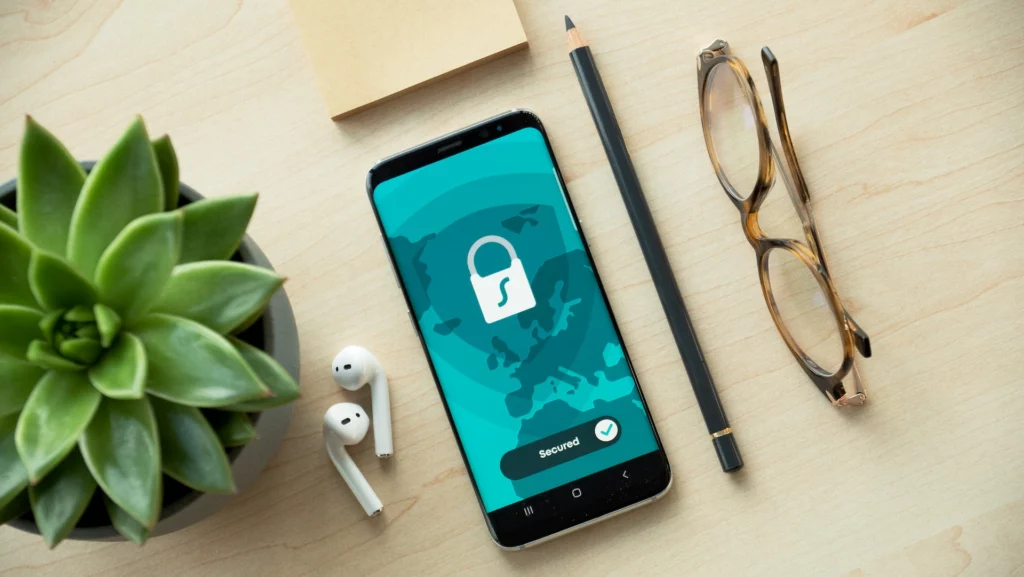Virtual events have become a popular way to connect people from all over the world. From webinars to virtual conferences, the convenience and accessibility of these events are unmatched. However, with great convenience comes great responsibility. As a virtual event host, it is crucial to ensure the security and privacy of your attendees. After all, the last thing you want is for your event to become a breeding ground for cyber threats or personal information breaches.
That’s why in this article, we’re going to explore how you can make sure that your virtual event is not only informative and engaging but also secure and private. We’ll dive into the potential risks and threats that your attendees may face and how you can mitigate them by conducting a risk assessment, choosing a secure virtual event platform, and implementing security protocols and guidelines.
Pre-Event Security Measures for Virtual Events
This could include reviewing your event platform’s security features, evaluating your data storage and handling practices, and considering the types of information that attendees will be sharing during the event. Here are some specific steps you can take before your event to minimize risks:

Choose a secure virtual event platform:
It’s important to look for platforms that offer robust security measures such as data encryption, access controls, and monitoring capabilities.
Data encryption is an essential security feature that ensures that sensitive data transmitted between attendees and the platform is protected from interception by unauthorized parties. Access controls such as multi-factor authentication and password protection can help prevent unauthorized access to the event by ensuring that only authorized attendees and staff can access the platform.
Monitoring capabilities are also important, as they enable event organizers to detect any suspicious activity or behavior that could compromise the security or privacy of attendees. Look for platforms that provide real-time monitoring capabilities for chat rooms, social media feeds, and other communication channels.
Set up security protocols and guidelines:
The guidelines should include best practices for data handling, password management, and safe online behavior. Ensure all attendees and staff are aware of these guidelines before the event.
Here are some guidelines for staff and attendees to follow in order to maintain security and privacy at virtual events:
- Use strong and unique passwords for all event-related accounts and avoid sharing them with others
- Do not share any sensitive or personal information during the event unless it is absolutely necessary
- Keep all software and devices updated with the latest security patches and antivirus software
- Only use trusted and secure networks to access the event, such as a private Wi-Fi network or a VPN
- Avoid clicking on any suspicious links or attachments that may be sent during the event
- Report any suspicious behavior or activity to the event organizer immediately
- Always log out of the event platform and any related accounts when the event is over
- Follow any additional security guidelines or protocols provided by the event organizer
Train event staff and attendees on security best practices:
Consider hosting training sessions before the event to teach attendees and staff how to identify and respond to potential threats. This could include topics such as phishing scams, malware, and other common security threats.
By taking these steps during pre-event preparation, you can significantly reduce the risk of security and privacy breaches during your virtual event.
Security Measures to Implement During Your Virtual Event
Ensuring the security and privacy of attendees at virtual events requires ongoing effort during the event itself. Here are some important steps to take:

Monitor attendee activity and behavior:
You should have a monitoring system in place to detect any suspicious activity or behavior that could compromise the security or privacy of attendees. This could include monitoring chat rooms, social media feeds, and other communication channels. By monitoring attendee behavior, you can identify any potential security threats in real time and take appropriate action to mitigate the risk.
Implement access controls and authentication measures:
Multi-factor authentication, passwords, and PINs should be used to ensure that only authorized attendees can access the event. This can help prevent unauthorized access to sensitive information or resources. You should also use strong passwords and require attendees to use a secure password when creating their accounts to ensure that their login credentials are not compromised.
Use secure communication channels:
This can help protect against eavesdropping or other security risks. In addition, you should use encrypted messaging platforms to communicate with attendees and avoid sending sensitive information over unsecured channels.
Provide a secure way for attendees to submit questions or comments:
This could include a dedicated Q&A session or a feedback form that is only accessible to you. By providing a secure platform for attendees to submit their questions or feedback, organizers can ensure that attendee data is protected and kept confidential.
Address any security incidents in real time:
You should have a plan in place for how to respond to security incidents in real-time to minimize any potential damage. This may involve temporarily shutting down certain features or taking other measures to contain the incident. You should also communicate with attendees in a timely and transparent manner to keep them informed about any security incidents and what steps are being taken to address them.
By taking these steps during the event, you can help ensure the security and privacy of your attendees and minimize the risk of security incidents.
Post-Event Practices for Robust Virtual Event Security
It is important to conduct a thorough review of the security protocols that were in place during the event. This can help identify any areas that may have been overlooked or need improvement for future events. Some areas to review may include:

- Access controls and authentication measures: Were the authentication measures used effectively? Were there any unauthorized access attempts?
- Communication channels: Were the communication channels used securely? Were there any instances of eavesdropping or other security risks?
- Monitoring system: Was the monitoring system effective in detecting suspicious activity or behavior? Were there any incidents that were not detected in time?
- Incident response plan: Was the incident response plan effective in minimizing the potential damage of any security incidents? Were there any areas for improvement?
Securely dispose of attendee data and event materials:
It helps to prevent the potential misuse or unauthorized access of personal information and sensitive data. Here are some considerations to keep in mind when disposing of attendee data and event materials:
- Follow data protection regulations: Make sure to comply with any applicable data protection regulations, such as the General Data Protection Regulation (GDPR) or the California Consumer Privacy Act (CCPA). These regulations set out specific requirements for how personal information should be handled and disposed of.
- Delete personal information: This can be done by using software that permanently erases data, such as wiping the hard drive or overwriting the data multiple times to ensure it cannot be recovered.

- Shred physical materials: If you printed out any materials for the event, such as badges or brochures, make sure to shred them securely. This can help prevent anyone from accessing sensitive information, such as attendee names or contact details.
- Securely wipe digital materials: If you used any digital materials during the event, such as presentation slides or videos, make sure to securely wipe them from your device or server.
- Use a professional shredding or data destruction service: If you have a large volume of physical or digital materials to dispose of, consider using a professional shredding or data destruction service. These services can securely and efficiently dispose of your materials in compliance with data protection regulations.
By taking these steps to securely dispose of attendee data and event materials, you can help protect the privacy and security of your attendees and minimize the risk of unauthorized access or data breaches.
Collect feedback from attendees on security and privacy measures:
This can help identify any areas where attendees felt their security and privacy could have been better protected. Some ways to collect feedback may include:
- Sending out a survey or questionnaire to attendees
- Conducting a focus group with a small group of attendees
- Reviewing feedback received through communication channels during the event
By taking these post-event follow-up steps, you can ensure that the security and privacy of attendees are adequately protected for future virtual events.
Conclusion
Hosting a virtual event can be a great way to connect with attendees from around the world. However, it is important to prioritize the security and privacy of attendees throughout the planning, execution, and post-event phases. By following the guidelines and best practices discussed in this article, you can minimize the risk of security incidents and ensure that attendees feel safe and protected. Remember to stay vigilant, stay informed about the latest security threats, and continually evaluate and improve your security protocols to keep your virtual events safe and secure.
Frequently Asked Questions
What are some common security threats for virtual events?
Unauthorized access to event platforms or data, phishing attacks, malware or ransomware, distributed denial of service (DDoS) attacks, and hacking attempts.
How can I ensure that attendee data is securely stored and transmitted?
Use a secure platform that offers robust data encryption and other security measures. Additionally, you should use secure communication channels, implement access controls and authentication measures, and only collect the data that is necessary for the event.
What is the platform’s track record?
Do your research to determine the platform’s track record with security and reliability. Read reviews and check for any past security incidents to ensure that the platform is a safe and secure option for your event.
Is it necessary to have a dedicated security team for virtual events?
It depends on the size and complexity of the virtual event. Smaller events may not require a dedicated security team, but larger events with a higher risk of security incidents may benefit from having a dedicated team to monitor and address security concerns.
What can I do to continuously improve the security of my virtual events?
Regularly review your security protocols and identify areas for improvement. Additionally, you should stay up-to-date on the latest security threats and best practices, and continually educate attendees and staff on how to maintain a secure and private virtual event environment.






